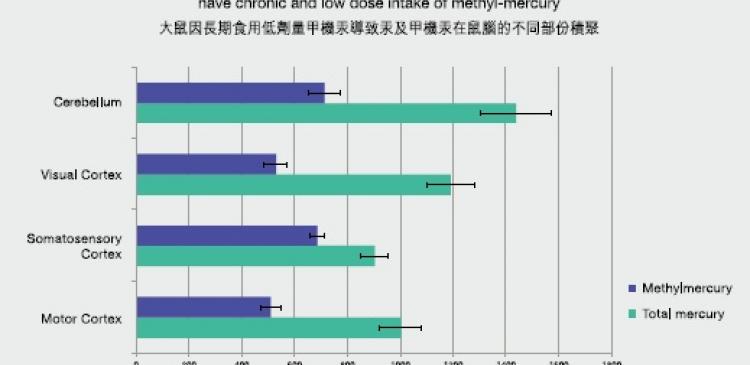Prof. Samuel Lo
The research team led by Prof. Samuel Lo, Associate Head of the Department of Applied Biology and Chemical Technology, recently discovered that chronic exposure to low-dose methyl-mercury, an environmental contaminant commonly found in seafood, may increase the risk of developing neurodegenerative disease.
In their study of rats chronically exposed to low doses of methyl-mercury, the researchers concluded that the cerebellum accumulates the largest amount of mercury, followed by the visual cortex, motor cortex and somatosensory cortex. Another important finding of this study was that in addition to methyl-mercury, the brain also accumulates other forms of mercury. In cases of acute mercury poisoning, such as that seen in Minamata disease, the neuro-sensory pathway seems to be affected first. The researchers employed advanced proteomic techniques to investigate protein expression in the somatosensory cortices of rats intoxicated with low-dose methyl-mercury. They found the expression of 104 out of 973 proteins to decrease by at least 50% after exposure to mercury contaminants.
Among these down-regulated proteins, 18% were found to be related to the cytoskeleton, 26% to energy metabolism, 18% to protein metabolism, and 20% to neurotransmitter release and signal transduction. The combined effects of these down-regulated proteins appear to suppress normal neuronal functions to an enormous degree, including the ability to repair the cerebrum itself. These results led the researchers to the conclusion that chronic exposure to low-dose methyl-mercury may increase the risk of developing neurodegenerative disease.
This article was first appeared on the PolyU Milestone, June 2011 Edition




